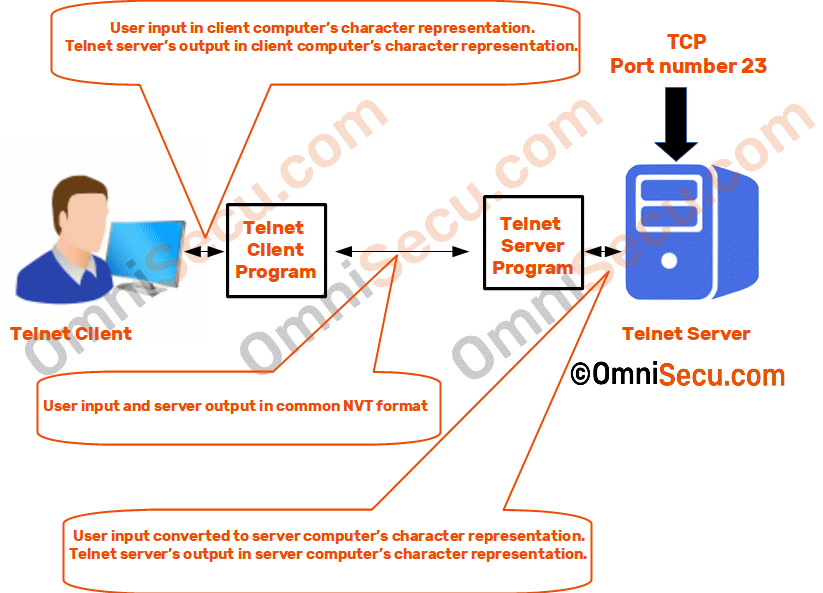TELNET NVT (Network Virtual Terminal)
There are many different Operating Systems. Different operating systems have terminals with different keys or key combinations as commands. Instead of having many different terminal types of different Operating Systems, TELNET clients and server send data, commands and server output using a virtual terminal type called as NVT (Network Virtual Terminal). The NVT (Network Virtual Terminal) is defines the character set, carriage return, line termination etc. In TELNET, NVT (Network Virtual Terminal) is a virtual terminal having a basic structure common to a different types of real terminals.
NVT (Network Virtual Terminal) was designed for the interoperability of different types of terminals of different operating systems. Please refer below image.

Using NVT (Network Virtual Terminal), the TELNET client translates input characters into a universal common NVT format and sends them over network to the TELNET server. In the TELNET server, those NVT format is translated to a form that can be understood by TELNET server Operating System.
As discussed before in previous lesson (What is TELNET), TELNET uses an 8-bit data format. 7-bits are used to represent ASCII character set and one additional bit for control characters.